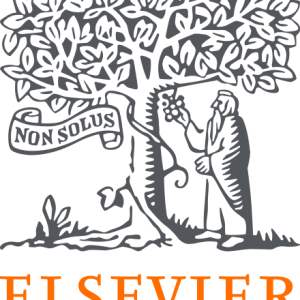| عنوان مقاله به انگلیسی | Molecular unfolding formulation with enhanced quantum annealing approach |
| عنوان مقاله به فارسی | مقاله فرمول بازگشایی مولکولی با رویکرد بازپخت کوانتومی پیشرفته |
| نویسندگان | Arit Kumar Bishwas, Arish Pitchai, Anuraj Som |
| زبان مقاله | انگلیسی |
| فرمت مقاله: | |
| تعداد صفحات | 11 |
| دسته بندی موضوعات | Quantum Physics,Emerging Technologies,فیزیک کوانتومی , فن آوری های نوظهور , |
| توضیحات | Submitted 1 March, 2024; originally announced March 2024. , Comments: 11 pages, 8 figures |
| توضیحات به فارسی | ارسال 1 مارس 2024 ؛در ابتدا مارس 2024 اعلام شد ، نظرات: 11 صفحه ، 8 شکل |
چکیده
Molecular docking is a crucial phase in drug discovery, involving the precise determination of the optimal spatial arrangement between two molecules when they bind. The such analysis, the 3D structure of molecules is a fundamental consideration, involving the manipulation of molecular representations based on their degrees of freedom, including rigid roto-translation and fragment rotations along rotatable bonds, to determine the preferred spatial arrangement when molecules bind to each other. In this paper, quantum annealing based solution to solve Molecular unfolding (MU) problem, a specific phase within molecular docking, is explored and compared with a state-of-the-art classical algorithm named “GeoDock”. Molecular unfolding focuses on expanding a molecule to an unfolded state to simplify manipulation within the target cavity and optimize its configuration, typically by maximizing molecular area or internal atom distances. Molecular unfolding problem aims to find the torsional configuration that increases the inter-atomic distance within a molecule, which also increases the molecular area. Quantum annealing approach first encodes the problem into a Higher-order Unconstrained Binary Optimization (HUBO) equation which is pruned to an arbitrary percentage to improve the time efficiency and to be able to solve the equation using any quantum annealer. The resultant HUBO is then converted to a Quadratic Unconstrained Binary Optimization equation (QUBO), which is easily embedded on a D-wave annealing Quantum processor.
چکیده به فارسی (ترجمه ماشینی)
اتصال مولکولی یک مرحله مهم در کشف مواد مخدر است که شامل تعیین دقیق ترتیب بهینه مکانی بین دو مولکول هنگام اتصال آنها می شود.چنین تجزیه و تحلیل ، ساختار سه بعدی مولکول ها یک مورد اساسی است ، که شامل دستکاری بازنمایی مولکولی بر اساس درجه آزادی آنها ، از جمله روتای روت و چرخش سفت و سخت در امتداد پیوندهای قابل چرخش ، برای تعیین ترتیب فضایی مورد نظر در هنگام اتصال مولکول ها به هر یک است.دیگر.در این مقاله ، محلول مبتنی بر بازپرداخت کوانتومی برای حل مشکل آشکار سازی مولکولی (MU) ، یک فاز خاص در اسکله مولکولی ، با یک الگوریتم کلاسیک پیشرفته به نام “Geodock” مورد بررسی قرار گرفته و مقایسه می شود.آشکار شدن مولکولی بر گسترش یک مولکول به حالت آشکار شده برای ساده سازی دستکاری در حفره هدف و بهینه سازی پیکربندی آن ، به طور معمول با به حداکثر رساندن مساحت مولکولی یا مسافت اتم داخلی متمرکز است.مشکل آشکار سازی مولکولی با هدف یافتن پیکربندی پیچشی که باعث افزایش فاصله بین اتمی در یک مولکول می شود ، باعث افزایش ناحیه مولکولی می شود.رویکرد بازپرداخت کوانتومی ابتدا مشکل را در یک معادله بهینه سازی باینری بدون محدودیت باین (HUBO) که به یک درصد دلخواه برای بهبود راندمان زمان هرس می شود ، رمزگذاری می کند و قادر به حل معادله با استفاده از هر آنیلر کوانتومی است.HUBO حاصل از آن به یک معادله بهینه سازی باینری بدون محدودیت درجه دوم (QUBO) تبدیل می شود ، که به راحتی در پردازنده کوانتومی آنیلایی D-Wave تعبیه می شود.
| توجه کنید این مقاله به زبان انگلیسی است. |
|
برای سفارش ترجمه این مقاله می توانید به یکی از روش های تماس، پیامک، تلگرام و یا واتس اپ با شماره زیر تماس بگیرید:
09395106248 توجه کنید که شرایط ترجمه به صورت زیر است:
|


نقد و بررسیها
هنوز بررسیای ثبت نشده است.